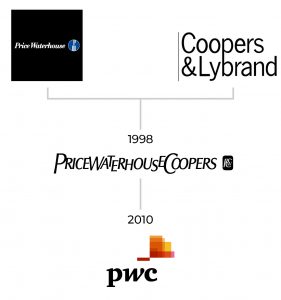
Rebranding can be great for your company in a number of ways, and you can reap great benefits from this creative and exciting process. A well-executed rebrand can have a long-term positive impact and invigorate your company’s success. But it doesn’t come without risks, so it’s important to have a well-reasoned approach that complements your overall business and marketing strategy. There are several key reasons and trigger points which determine when and why you may need to refresh or rebrand.
Rebrand vs. brand refresh
Firstly, it’s important to understand the difference between a rebrand and a refresh in order to determine which approach is most appropriate. The term “rebrand” is commonly used interchangeably when referring to a light refresh or a full rebrand. These two terms have a lot of overlap and the lines are often blurred, but this is what we consider the difference between the two.
Rebrand:
- A rebrand is a fundamentally different new direction for the brand that includes redefining the brand values, positioning strategy, and how the brand is perceived in the marketplace.
- Usually this also entails a new visual identity and occasionally, a new name.
- A rebrand is a heavily involved process that requires extensive research and planning, and a meticulous roll-out plan.
Brand refresh
- A brand refresh is an evolution of the brand that focuses on the visual identity and cosmetic changes, though it can often include a light refresh of the marketing strategy and messaging as well.
- It does not change the brand’s essence or its fundamental market position.
- A brand refresh involves an updated look and feel, while maintaining recognisable connection to its original identity.
In what circumstances should I consider a rebrand or a refresh?
It’s a great question! Why do companies rebrand? There are many reasons why a company may consider a brand refresh or rebrand. Let’s break it down and look at some of the reasoning behind these decisions. Your company may fit into one or several of these categories:
1. Connect with a new audience
Your brand should be designed to connect your company to your customers. Therefore if you reposition your business to target a completely new customer persona, your brand will need to be adjusted to accommodate this change.
If you are looking to reach a new audience, rebranding might be the answer. People will sit up and take notice, which in turn will help you to grow your audience and hopefully your client base. This doesn’t necessarily mean a name change – it could be an update of your messaging and a refresh of your brand identity.
2. Differentiate your company from your competitors
There might be new competitors entering the marketplace, prompting your need to reposition. Differentiating your brand brings you to front of mind for your audience. It could help to identify you as thought leaders or leading in innovation, or that you have a caring culture or a company that is constantly adapting to change. Find your point of difference and run with it!
3. Adjust your key messaging, your services and your marketing strategy
If your company’s vision, mission, values, and market are no longer reflected in your brand, then a rebrand might be the right decision. Your company may have experienced significant growth, and your product or service offering may have changed or evolved over time. You might have clearly defined or identified your niche, or equally it might have expanded. As your business has developed, your original marketing messaging and strategy may have become outdated. Rebranding allows you to make these adjustments and revisit your strategic goals, while communicating your updated brand with clarity and intent.
4. Merging of two companies or change of ownership

The rebrand process of PWC, a result of the merging of 2 accountancy firms
Reactive rebranding is a reaction to circumstances. For example – two companies merging, a change of ownership or acquiring another company. This is quite common, for example the 1998 merging of accountancy firms Price Waterhouse and Coopers Lybrand to become Price Waterhouse Coopers. Price Waterhouse Coopers rebranded again in 2010, becoming the present day giant of professional services known simply as pwc.
5. Are you still relevant in the marketplace?
If a company is losing relevancy in consumers’ minds, it may benefit from a rebrand or refresh. Keeping relevant, whether it be product changes or the way you connect with customers changes it is important to communicate it clearly to your customers. Some examples are Yellow Pages rebranded to YP to focus on the digital space in an effort to keep its relevance. Nike created a sub brand Nike-SB to focus exclusively on reaching skateboarders.
6. Dated look and feel
Design naturally dates over time, with new trends and channels emerging. How future-proof is your brand? How do your customers perceive your company, its services and what it has to offer? Is it designed to work in today’s digital world?
Before a brand refresh we often conduct a branding workshop and/or telephone interviews with staff, key stakeholders, suppliers and clients asking specifically targeted questions to ascertain and break down the perception of a company and its brand. This is often vital information in drafting new key messaging and providing evidence of what is needed to upper management.
7. Negative reputation

The rebranding of Facebook’s parent company to Meta has been met with a mixed reception
Another example of reactive rebranding is a response to circumstances like negative publicity or a poor reputation that just can’t be shaken.
The Lance Armstrong Foundation was founded in 1997 as a charity to raise money for cancer research. However, in 2012 after years of speculation and rumour, it was confirmed that Lance Armstrong, the seven time Tour de France champion had been illegally using performance-enhancing drugs throughout his career. He was banned from professional cycling and lost his titles. Armstrong’s charity foundation formally changed its name to the Livestrong Foundation in an effort to distance themselves from his tarnished name.
Another recent example is Facebook’s parent company rebranding to Meta, in an effort to shake off negative associations. This was a reactive rebrand in response to a series of PR crises and unfavourable media coverage resulting from leaked documents. Rebranding in these circumstances is not a fool-proof solution and may generate even further criticism and public backlash.
8. Expected growth
When a company is preparing for expected growth, particularly international growth, it might rebrand products and services into a consolidated brand. This is often done for consistency and to save money over time. This type of rebranding is also done when a company simply needs to create a greater sense of brand unity across its business. You may need to refresh your brand if you’re expanding to international markets who won’t identify with your current logo and messaging. If you are looking to market internationally it’s always worth checking what your company name means in other languages and cultures to avoid any unfortunate misinterpretations.
9. Weak brand image
As we discuss in our recent blog, brand image matters more than you think – even in the B2B space. Brand image is the opinion consumers form about your brand and how it’s perceived. A strong brand identity translates into a positive brand image.
You can’t control how each customer will perceive your brand, but you can work hard to build a brand image that helps ensure you come across the way you intend to. The fact is that people buy into what you stand for. If your brand image is failing you and most importantly your customers, it may be time for a rethink.
After your rebrand or refresh
Don’t go quiet, but do stop referencing your old brand. Stop using old templates and ensure you update your brand for consistency across all of your platforms and touchpoints.
In summary
The rewards of investing in your brand are numerous and include vital factors such as that first impression, pride, recognition and credibility. Showcase yourself with a strong brand identity that is easily recognisable and uniform across your social media platforms, website and print collateral. This will set you apart from your competitors.
Company brands should continuously and strategically review their positioning in the marketplace. Consistency is important, as well as not being left behind. Staying relevant is crucial in the ever-changing digital world we strive to stand out in.
Learn more
Watch our free, 30-minute long webinar that explores this topic in more depth.
Unsure where to start? Focused Marketing specialise in branding workshops, brand audits and strategy-led brand reviews and design projects. Email Caitlin at [email protected] for an informal discussion, or call us on (07) 3844 9664.
Recent Comments